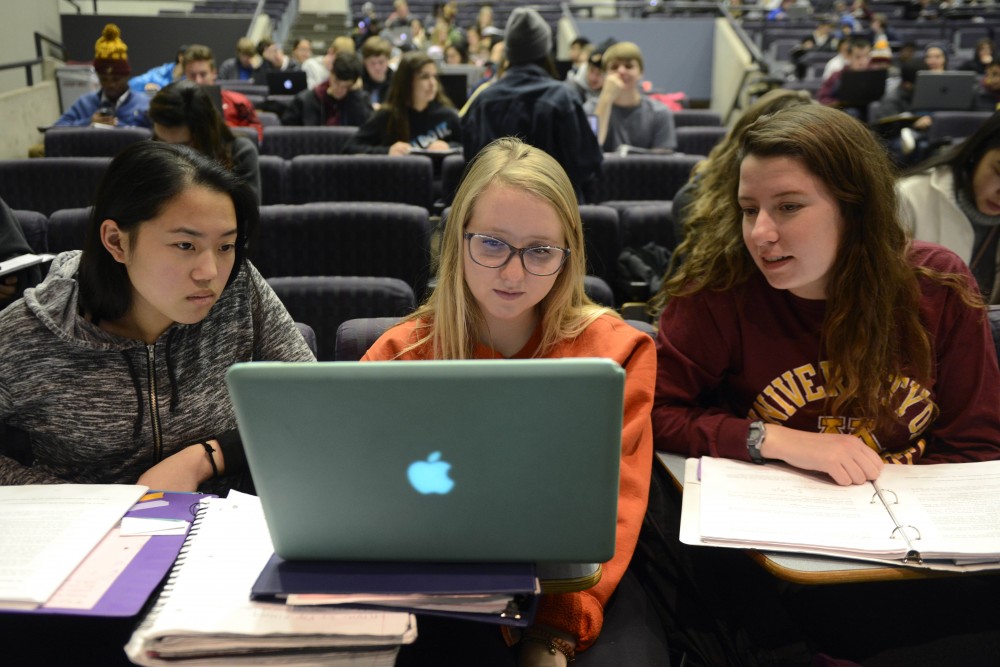Lab experiments and instruction at the University of Minnesota are transitioning from a straightforward recipe to spontaneous learning.
As part of the Campaign for the College of Biological Sciences, which launched Nov. 5, faculty plan to use new teaching methods in classrooms to improve lab-based learning.
These methods are based on University research from the three-year-old Biology Teaching and Learning Department, or BTL, one of a handful of departments around the country researching how students can most effectively understand science, said David Kirkpatrick, BTL’s interim head.
The department was the first of its kind in the country, said Valery Forbes, CBS dean.

BTL faculty are hoping to leave behind predictable, “cookbook”-style lab experiments which have been performed the same way for years, Kirkpatrick said.
“No one who is actually doing science knows what the answer is going to be, or you wouldn’t do the experiment,” Kirkpatrick said.
Instead, BTL hopes to incorporate active-learning and course based undergraduate research experience, or CURE learning, into research labs. These are classroom methods which ask students to apply conceptual knowledge to hands-on learning, Kirkpatrick said.
“It should be modeled on how real science is being done… students have to be able to do all the different steps that a scientist would do,” he said. “The data are very conclusive that these types of approaches work well.”
Renovations to old-style labs in St. Paul’s Biological Sciences building will be funded by the Campaign for CBS and are set to be complete in a little over a year — though the project is still in the planning stages.
Despite plans to update labs, CBS faculty have incorporated active-learning into classrooms for more than a decade.
Universities around the country are also building active-learning classrooms and labs, many of which are modeled after Bruininks Hall, Forbes said.
“[The department] is able to, in a sense, use the classroom as their lab,” she added.
Shontel Smith, senior biology major and member of the CBS student board, said her active-learning courses were harder than others, sometimes causing frustration.
Still, Smith said active-learning benefits the student body.
“[Active learning] taught me to be accountable for my learning, and it taught me that… if you don’t understand something, you have to reach out and make that happen,” Smith said.
Students said they prefer to break the mold from traditional, lecture-based classes.
“It allows you to have those interactions with the professors that go deeper just than the material that’s in the book or in the slide,” Smith said.
Sophie Vrba, president of the CBS student board and microbiology junior, said her active-learning courses have tests frequently throughout the semester.
“I … feel like I’m retaining the information a lot better, just because I am forced to interact with the material constantly,” Vrba said.








